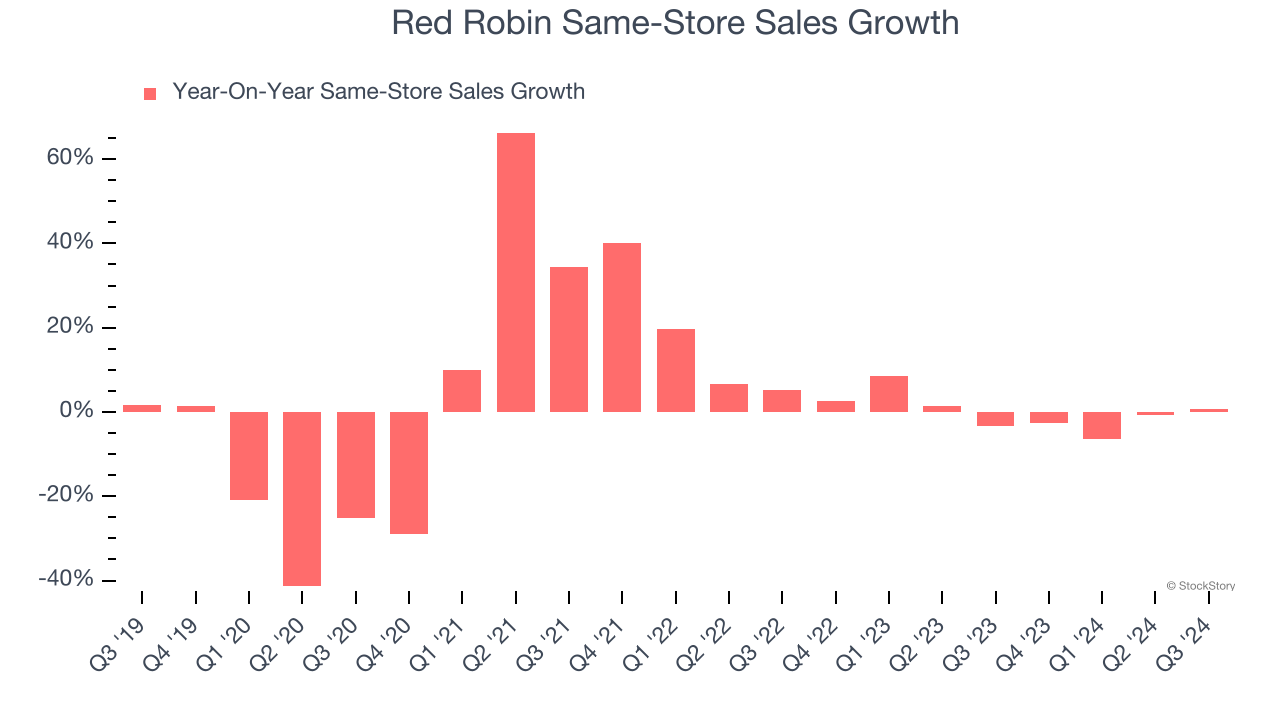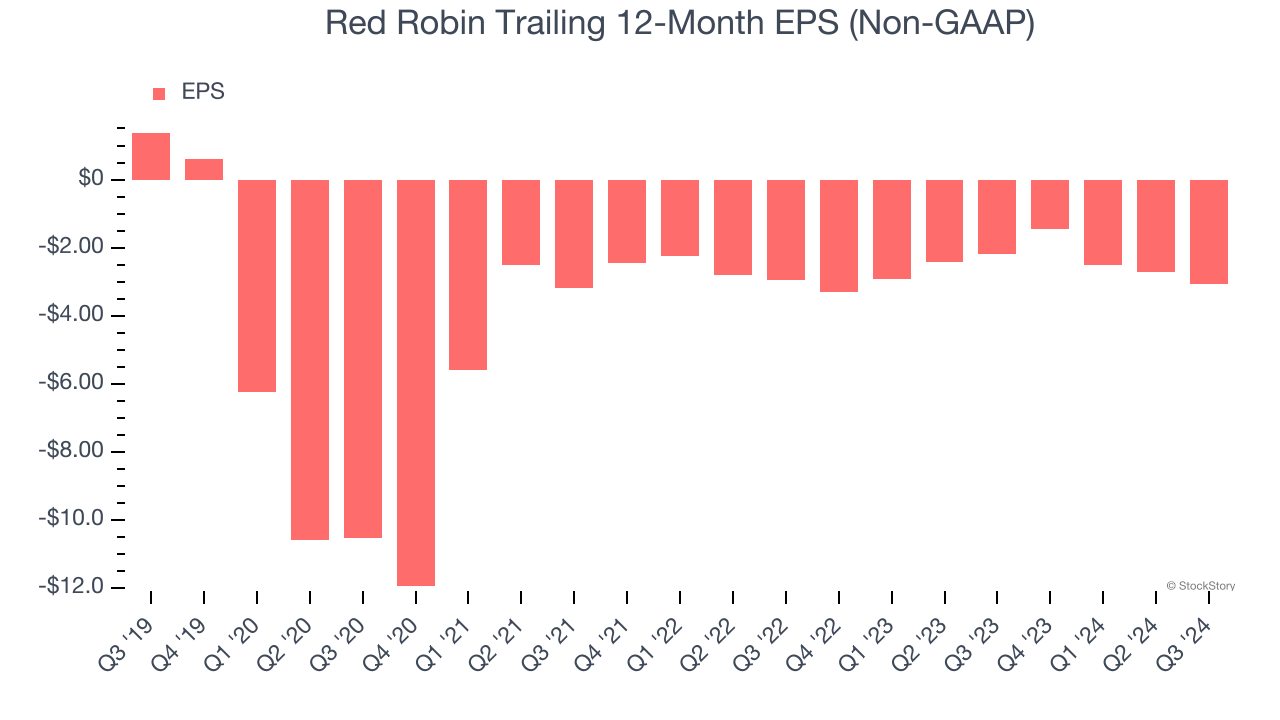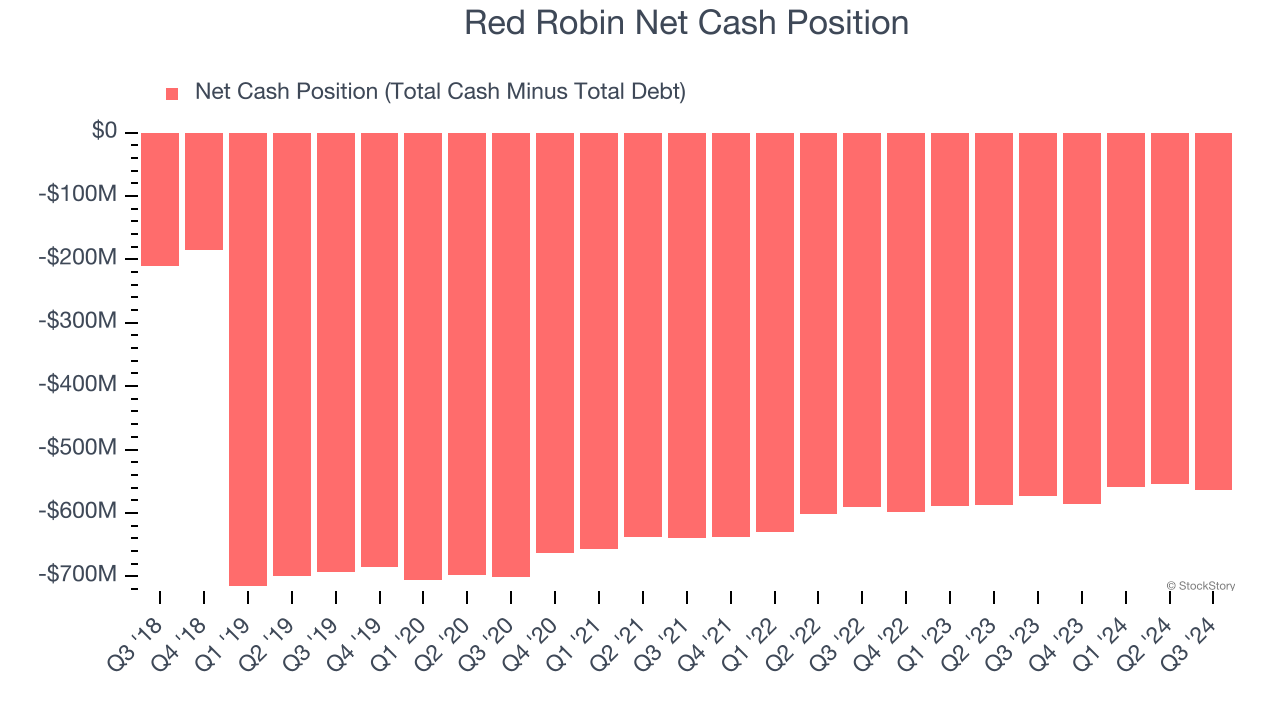
Over the last six months, Red Robin’s shares have sunk to $5.93, producing a disappointing 9.3% loss - a stark contrast to the S&P 500’s 7.3% gain. This was partly driven by its softer quarterly results and may have investors wondering how to approach the situation.
Is now the time to buy Red Robin, or should you be careful about including it in your portfolio? Get the full breakdown from our expert analysts, it’s free.Even with the cheaper entry price, we're swiping left on Red Robin for now. Here are three reasons why you should be careful with RRGB and a stock we'd rather own.
Why Do We Think Red Robin Will Underperform?
Known for its bottomless steak fries, Red Robin (NASDAQ: RRGB) is a chain of casual restaurants specializing in burgers and general American fare.
1. Flat Same-Store Sales Indicate Weak Demand
Same-store sales show the change in sales at restaurants open for at least a year. This is a key performance indicator because it measures organic growth.
Red Robin’s demand within its existing dining locations has barely increased over the last two years as its same-store sales were flat.

2. EPS Trending Down
We track the long-term change in earnings per share (EPS) because it highlights whether a company’s growth is profitable.
Sadly for Red Robin, its EPS declined by 33.2% annually over the last five years while its revenue was flat. This tells us the company struggled because its fixed cost base made it difficult to adjust to choppy demand.

3. High Debt Levels Increase Risk
Debt is a tool that can boost company returns but presents risks if used irresponsibly. As long-term investors, we aim to avoid companies taking excessive advantage of this instrument because it could lead to insolvency.
Red Robin’s $585.5 million of debt exceeds the $21.99 million of cash on its balance sheet. Furthermore, its 15× net-debt-to-EBITDA ratio (based on its EBITDA of $36.73 million over the last 12 months) shows the company is overleveraged.

At this level of debt, incremental borrowing becomes increasingly expensive and credit agencies could downgrade the company’s rating if profitability falls. Red Robin could also be backed into a corner if the market turns unexpectedly – a situation we seek to avoid as investors in high-quality companies.
We hope Red Robin can improve its balance sheet and remain cautious until it increases its profitability or pays down its debt.
Final Judgment
We see the value of companies helping consumers, but in the case of Red Robin, we’re out. Following the recent decline, the stock trades at 1.6× forward EV-to-EBITDA (or $5.93 per share). While this valuation is optically cheap, the potential downside is huge given its shaky fundamentals. There are more exciting stocks to buy at the moment. We’d recommend looking at ServiceNow, one of our all-time favorite software stocks with a durable competitive moat.
Stocks We Would Buy Instead of Red Robin
The elections are now behind us. With rates dropping and inflation cooling, many analysts expect a breakout market to cap off the year - and we’re zeroing in on the stocks that could benefit immensely.
Take advantage of the rebound by checking out our Top 5 Strong Momentum Stocks for this week. This is a curated list of our High Quality stocks that have generated a market-beating return of 175% over the last five years.
Stocks that made our list in 2019 include now familiar names such as Nvidia (+2,691% between September 2019 and September 2024) as well as under-the-radar businesses like United Rentals (+550% five-year return). Find your next big winner with StockStory today for free.

